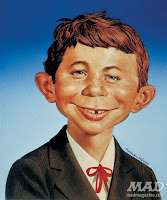I tried to come up with a clever title using Flo from those Progressive Insurance commercials, but I couldn’t come up with anything that didn’t feel… well, kind of awkward. They weren’t bad titles, they just didn’t read well. Or they required a bit of mental gymnastics to make sense.
Either way, they didn’t work.
Which is, oddly enough, what I wanted to blather on about this week.
Have you ever read a book you just couldn’t put down? One where you start reading just after lunch and suddenly realize it’s two in the morning? Or maybe it was a movie that sucked you in and you were stunned to realize that the 163 minute run time was already used up.
Oscar-winning screenwriter Bruce Joel Rubin made a wonderful observation a while back. To paraphrase, we experience good stories in our gut, not in our head. A good story grabs us at an emotional level—in the gut. But whenever something goes wrong, we start to analyze and examine it—we go into our head.
The best term I’ve heard for this is flow. Put at its simplest, flow is the readability of my story. It has to do with how much effort it takes for the reader to keep reading. Having good flow means my writing is smooth and slick, that every line, paragraph, and chapter rolls into the next and carries you along for the ride. Readers can’t stop because it’s actually easier to keep turning the page than to put the book down.
On the other hand, a story with bad flow will make a reader stumble a lot. If I’m reading a book, whenever I pause to roll my eyes, scratch my head, or go back two or three pages to figure something out… each one’s another bump in the road. If you’ve ever tried a book and just couldn’t get into it, odds are the flow sucked. You’d read, trip over a page or two, and put it back down. You can’t get into it because you keep getting knocked back out.
Unfortunately, this means flow isn’t something I can just fix by changing a word here or there. It’s one of those things where you can tweak each element but still not affect the final outcome. Getting good (or even better) at flow is an experience thing that just comes from writing. The more I write, the more subtle methods and tricks and fixes I develop.
That being said… here are a few things my story needs to do if it’s going to have good flow. Or, if you prefer, these are some of the things a story with bad flow often won’t do…
Be interesting– Easiest way in the world to keep my story from lagging—don’t be boring. This doesn’t mean I need five explosions and a swordfight on page one, but when I’m telling a story, I need to get to the story. If it’s sci fi, I should show the reader something amazing. If it’s a love story, my characters need to display some passion. If it’s a horror story, I need to scare some folks, or at least weird them out a bit.
Have characters act in character– A writing coach named Drusilla Campbell once commented that when the nun viciously kills a gardener, that’s also when most people remember that laundry they have to fold. People who are blatantly incompetent at their jobs, cruel people who do nice things, people who are just a little too smart or too scared or too law-abiding when it suits the story. It’s jarring when my characters act in contradictory ways to what the reader’s come to expect. And that jarring is what gets books and screenplays tossed in the big left-hand pile.
Have smooth dialogue– Kind of related to the last point. I can get away with one character who talks like a computer. Maybe another who keeps slipping into a foreign language. But too much stylized, unnatural, or just plain bad dialogue brings things to a grinding halt. Adults should talk like adults, kids should talk like kids, and cybernetic lizard men should talk like… well, you know.
Watch the word choice– If I’m picking obscure or overly-long words just to create flowery descriptions or show off my vocabulary, there’s a good chance I’m disrupting the flow of my writing. It’s really cool that I can describe someone as a female with resplendent obsidian ink ornamented across her glabrous scalp, but it’s much smoother and just as visual for me to say she’s a bald woman with dark tattoos.
It’s worth noting that typos and misused words fall into this category, too. Anytime someone sees something like that in print, it pulls them out of the story and puts them back in analyzing mode. In their head. And that’s not where I want them to be.
Take it seriously. Everyone makes a joke now and then to break the tension, but things need to carry the correct amount of gravity in my writing. Death, rape, unrequited love, violence… I shouldn’t bring these things up and not address them in an appropriate way. If my characters are drowning cats, threatening their employees, or punching strangers in the head, these acts should all be getting a response from my characters. If the reader thinks I’m not taking the events in my book seriously, well… why should they?
Again, though, just adjusting these elements doesn’t guarantee that my writing now has great flow. Every story is unique and has its own path to follow. But if you keep at it and continue to work on it, one day you’ll start to see the patterns. And then you’ll be able to go with the flow.
Next week, unless any of you have some requests or suggestions, I’ve been thinking about Captain America and superheroes a lot lately. So I wanted to make a small distinction.
Until then, go write.










